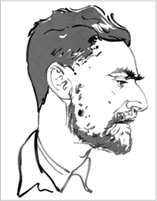

The works created by M. C. Escher (1898–1972) fascinate art lovers around the world. On close inspection, images that at first glance seem natural appear full of contradictions, with water flowing up- and downhill at the same time, stairs simultaneously leading up and down without any actual progress possible, and impossible rooms that could never exist in reality. Other images created by Escher depend on the eye of the beholder, with what is inside or outside, concave or convex, up or down eluding objective definition. These images irritate the viewer and often cannot be rightly resolved. Above all, the various possibilities they present cannot be viewed simultaneously. The management insights we can derive from the works of M. C. Escher likewise have to do with perception.
One of the most frequent errors managers make when they’re trying to make effective decisions is rashly assuming that the problem has been correctly defined. Make a habit of assuming that the problem is not clear. Defining the problem is probably the most important step in effective decision making. There is a very simple reason for this. Generally speaking, a wrong answer to the right question is easy to put right. But the right answer to the wrong question is usually hard to rectify, if only because it is so hard to recognize the wrongness of the question. When defining a problem, effective managers ask the following fundamental question: What is the real issue here? And they then give themselves enough time, if at all possible, to come up with an answer.
Only when the problem has been viewed from all angles will the opportunity present itself to genuinely grasp the situation and accurately pinpoint the problem. For this reason, the identified problem must constantly be verified against all the available observable facts. Until the definition of the problem covers and can satisfactorily explain all the observable facts, it will be incomplete and quite often altogether wrong. In this connection it is worth reminding yourself that in many cases you will only seem to be dealing with actual facts: all too often they will, at best, turn out to be opinions about facts. So take your time and be thorough when defining problems. Otherwise omissions, shortcuts, and inaccuracies will sooner or later come back to haunt you.
Do you now see the parallels with Escher’s confusing or sometimes utterly impenetrable drawings and lithographs? Learn from them by making a habit of questioning what you see before making any decisions. Assume that the seemingly obvious problem facing you—if indeed it genuinely is the problem—is probably not as clear-cut as it appears to be.
![]() Before you make a decision, doggedly try to gain the deepest possible understanding of your problem. Make a general point of questioning everything.
Before you make a decision, doggedly try to gain the deepest possible understanding of your problem. Make a general point of questioning everything.
![]() Consider one of the main problems facing your organization:
Consider one of the main problems facing your organization:
What is really at issue?